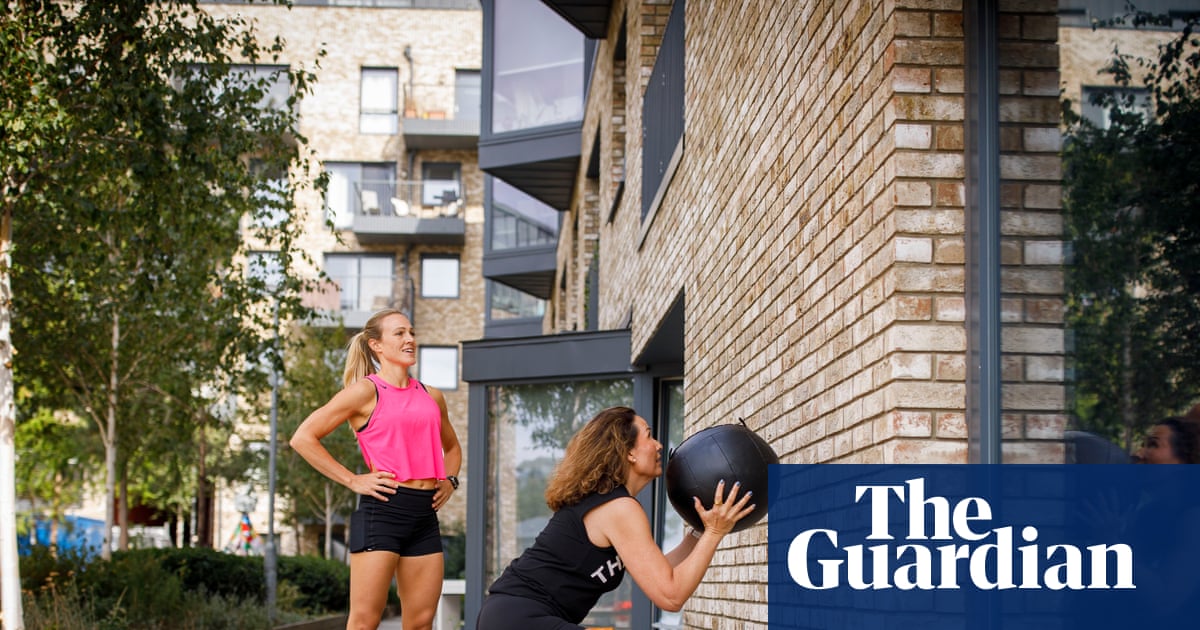For people looking to get in shape with a new exercise regime, slow and steady used to be the received wisdom for long-term change. But judging by fitness trends that are sweeping across the parks, streets and gyms of the UK, the solitary morning jog is giving way to something more high-octane.
More gym-goers are signing up for fitness competitions, ranging from obstacle courses to high-intensity events and races, which combine cardiovascular exercise and strength training.
Experts say the boom is driven by younger generations seeking connection as much as competition, with many of these workout devotees belonging to online fitness tribes of amateur athletes of all sizes and shapes. Women are entering events once dominated by men, while over-45s are signing up in increasing numbers.
One such discipline is Hyrox, a blood-pumping sequence of exercises involving a broken-up 8km run with a functional workout station such as rowing, pushing a sled or throwing a ball after every kilometre.
Participation has increased from approximately 175,000 athletes worldwide between 2023 and 2024 to more than 650,000 from 2024 to 2025, making it one of the fastest growing global sports. Organisers aim to hit 1 million by 2026.
In the UK, growth has been sharper still: just 7,400 people took part from 2021 to 2022, compared with more than 97,000 last season, with every event sold out. Fixtures span London, Manchester, Birmingham, Glasgow and Cardiff.
The popularity of the events hints at a universal appeal, but the cost of becoming a Hyrox athlete is not cheap: a race now typically costs more than £100, with travel, accommodation and kit pushing expenses higher if you do it abroad. Critics say it makes the sport accessible mainly to those with disposable income. And for those who win a place at the world championships, it usually means travelling abroad as well.
Another part of the appeal appears to be the recognition that comes with taking part. Events such as Hyrox promise podiums, medals, leaderboards and race photography – perfect opportunities to capture the kind of fitness social media content that contestants need to build their online identities as “everyday athletes”.
Another event, Spartan Race, founded in 2010, helped pioneer obstacle course racing (OCR) and now operates a portfolio of endurance and fitness brands. Its DEKA product, launched in 2019, is another functional fitness race that involves training in that improves the body’s ability to perform everyday activities such as lifting, squatting, twisting and balancing.
While Spartan races still skew about three-quarters male, some DEKA events are nearing parity, with 48% female participation. “Accessibility is what’s attracting women,” says Matthew Brooke, a senior vice-president of global operations at Spartan. “The stations we use are less like extreme strength or CrossFit and much closer to exercises that mimic real-world movements.” DEKA has grown at an average annual rate of 65% since its launch in 2019.
Brooke adds that the rise of group fitness has also been crucial: “Gyms like F45 and others are driving this. Functional group fitness is now the top-performing segment of the sector, growing year over year. It’s become a binding force – people are seeking a community where they feel a sense of belonging, where being uncomfortable together is empowering. Once you’re in that ecosystem, it’s almost self-reinforcing. Not quite a cult, but it has that power.”
Naomi Heffernan, a Nike trainer and founder of the all-women’s Inner Athlete community, says: “We’re seeing a real shift … Fitness isn’t just about going to the gym a couple of times a week any more. People want a goal, they want community and they want to test themselves … The rise in structured training programmes, like my women’s community, reflects that too. It’s about giving women a plan, accountability and the confidence to step into events.”
But are everyday bodies ready to cope with the demands of athlete-style competitions? Ed Thompson, who owns instant Physio, says: “Rates of patients attending … due to fitness competitions have increased. The hybrid fitness craze encourages newcomers, which is great for improving participation in regular exercise, but it does create the perfect conditions for overuse injuries.”
Group training, wearable technology and the kind of user-generated content that feeds social media have combined to make fitness more visible and social.
“Authentic stories of people training, competing and transforming their lives – that’s what resonates with gen Z and millennials,” Brooke says.
